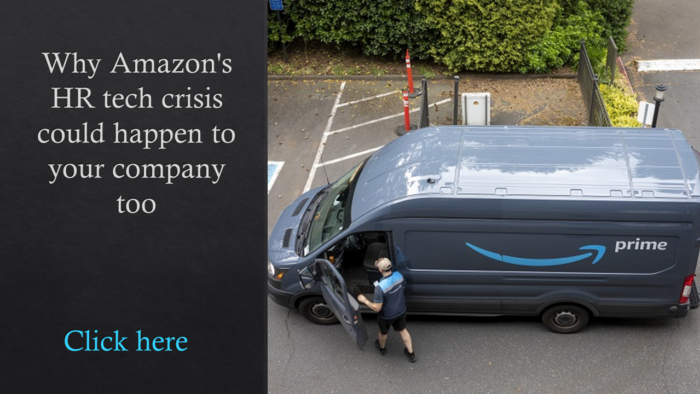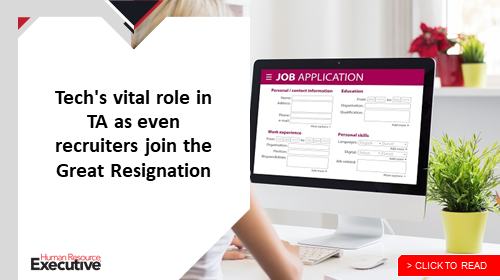At the start of 2021, many of us expected the world to return to normalcy, including a large-scale return to the workplace for many employees. But 2021 proved more volatile than anticipated given the rise of new COVID-19 variants, a massive war for talent, quit rates at an all-time high and the highest inflation levels in a generation.
The level of volatility is only increasing in 2022 as the world confronts new waves of COVID-19 variants, the continuation of hybrid work and the reality of real wage cuts for employees as annual compensation increases fall behind inflation. These realities will be layered on top of longer-term evolutions around technological transformation, continued DE&I journeys and ongoing political disruption and uncertainty.
Here are seven underlying trends that will shape the workplace this year:
1. Fairness and equity will be the defining issues for organizations.
According to our analysis of S&P 500 earnings calls, the frequency with which CEOs talk about issues of equity, fairness and inclusion on these calls has increased by 658% since 2018. Debates that have fairness at the core—around gender and race, climate change or other socio-economic, social and workplace issues—have become flashpoints in society.
 Questions of fairness and equity are emerging in new ways:
Questions of fairness and equity are emerging in new ways:
- Access to flexible work. We’ve seen organizations where some managers allow their employees flexibility while other managers don’t.
- Geographical salary considerations. Should employers lower the compensation for employees who move to locations with a lower cost of living even though the impact of their work hasn’t changed?
- Compensation for new versus established employees. In today’s labor market, companies are paying 20% compensation premiums to hire new employees. Is it fair to pay new employees so much more than established employees?
- Investments for different employee segments. Companies are offering new, targeted investments for specific segments of their workforce—for instance, additional financial resources to support employees with children. Employees without children have asked, “Why are employees who are parents getting something and I’m not?”
In 2022, executives will need to address the reality of a varied employee experience.
2. To compete in the war for knowledge worker talent, some companies will shorten the workweek rather than increase pay.
Employers are offering significant compensation increases to attract and retain talent in today’s market; our research found that, in the U.S., year-to-date salary increases have been more than 4%, compared to a historical norm of 2%.
However, when inflation is considered, real wages have declined. If inflation continues to rise, employers will find the compensation they offer is worth less and less in terms of purchasing power for employees.
See also: What’s keeping HR up at night? The Great Resignation and more, our survey shows
While some employers can compete for talent via compensation, others don’t have the financial resources to do so. Rather than trying to win the war for talent by increasing compensation, some employers are reducing the number of hours worked by employees and keeping compensation flat. Reducing the hours employees need to work gives less liquid employers a better chance to compete with organizations that offer higher compensation but not reduced hours.
3. Employee turnover will continue to increase as hybrid and remote work become the norm for knowledge workers.
Flexibility around how, where and when people work has become table stakes. In the U.S., employees expect flexibility within their job as much as they expect a 401(k). Employers that don’t offer flexibility will see increased turnover as employees move to organizations that offer a value proposition that better aligns with their desires.
 Unfortunately for many organizations, increasing flexibility will not slow turnover in today’s tight labor market. In fact, turnover may increase as there will be weaker forces keeping employees in seats. Employees who work hybrid or remotely have fewer friends at work and thus weaker social and emotional connections with their co-workers. These weaker connections make it easier for employees to quit their job by reducing the social pressure that can encourage employees to stay longer. In addition, with hybrid and remote work as the norm, the geographic radius of the organizations that someone can work for also expands. As the pool of potential employers increases, so does the attrition risk.
Unfortunately for many organizations, increasing flexibility will not slow turnover in today’s tight labor market. In fact, turnover may increase as there will be weaker forces keeping employees in seats. Employees who work hybrid or remotely have fewer friends at work and thus weaker social and emotional connections with their co-workers. These weaker connections make it easier for employees to quit their job by reducing the social pressure that can encourage employees to stay longer. In addition, with hybrid and remote work as the norm, the geographic radius of the organizations that someone can work for also expands. As the pool of potential employers increases, so does the attrition risk.
These factors will lead to sustained, higher turnover rates compared to any historical norms. The Great Resignation will shift to the Sustained Resignation.
4. The tools that we use to work remotely will become the tools that help measure and improve performance.
Managers have less insight into what work their employees are doing when work becomes more geographically dispersed. This leads to inaccurate and potentially biased performance ratings based upon where employees work rather than the impact they are having.
Related: Why HR leaders are unprepared for the talent marketplace revolution
 A Gartner survey in the fall of 2020 of nearly 3,000 managers revealed that 64% of managers and executives believe in-office employees are higher performers than remote employees, and 76% believe in-office workers are more likely to be promoted.
A Gartner survey in the fall of 2020 of nearly 3,000 managers revealed that 64% of managers and executives believe in-office employees are higher performers than remote employees, and 76% believe in-office workers are more likely to be promoted.
Moving forward, organizations will utilize the same tools they are currently leveraging to work in a virtual environment to assess the contributions that employees are making. For example, collaboration technology can nudge individuals to behave in different ways that improve the overall set of interactions across employees. For example, it can nudge managers to call on people who have not been as active in the meeting compared to other people. These nudges will cause participants to adjust the types of interactions they have to improve the quality of the meeting.
5. Wellness will become the newest metric that companies use to understand their employees.
In 2022, many companies expanded the wellness support they provided to their employees in the wake of the pandemic. A Gartner 2020 survey of 52 HR executives found that:
- 94% of companies made significant investments in their wellbeing programs
- 85% increased support for mental health benefits
- 50% increased support for physical wellbeing
- 38% increased support for financial wellbeing
This year, employers will add in new measures that assess employees’ mental, physical and financial health. The good news: These programs work for those who take advantage of them. Gartner analysis shows that employees who utilize these benefits report 23% higher levels of mental health, 17% higher levels of physical health and are 23% more likely to say they sleep well at night. These improvements in personal outcomes translate to higher levels of performance and retention.
 The bad news is that there has been limited uptake of these programs by employees. Across the last 12 months, our data show that less than 40% of employees have taken advantage of any wellbeing offering provided by their employer.
The bad news is that there has been limited uptake of these programs by employees. Across the last 12 months, our data show that less than 40% of employees have taken advantage of any wellbeing offering provided by their employer.
In 2022, organizations will adopt new employee wellbeing measures that capture the financial health, mental health and physical health of their employees to more accurately predict employee performance and retention.
6. Sitting is the new smoking.
The shift to working remotely has impacted employees in various ways. Some responded by increasing physical activity and losing weight (35%); however, more became increasingly sedentary (40%) and gained weight, likely due to the lost physical movement associated with commuting and walking around the workplace. As a result, some segments of the workforce will face increased health risks.
In response, organizations will adopt new communication plans, benefits and technologies to support the physical movement of their remote employees. Much like with traditional wellness programs, engagement with these physical wellness programs will often be lackluster. Some companies will go too far and elicit a backlash from employees who don’t think their employer has a role in their physical health. These physical wellness programs also carry DE&I risks, as they could harm the engagement of employees with disabilities.
7. DE&I outcomes will worsen in a hybrid world without intervention.
Gartner analysis has identified that employees who work remotely or on a hybrid schedule perform at levels equal to employees who work in the office. However, managers believe that people who work from the office are higher-performing; thus, managers are more likely to promote and give bigger raises to their employees who come into the office compared to those who don’t.
Data also show that, in a hybrid world, women and people of color prefer to work from home compared to white men. Given that, without intervention, gender wage gaps will widen and the degree of diversity within leadership benches will weaken. Without greater intentionality, underrepresented talent could be excluded from critical conversations, career opportunities and other networks that drive career growth.
Workplace disruption will not slow down; what will change is how variable that disruption becomes. In 2022, leaders will need to determine how to thrive in a period of disruption that plays out unevenly across their organizations.



